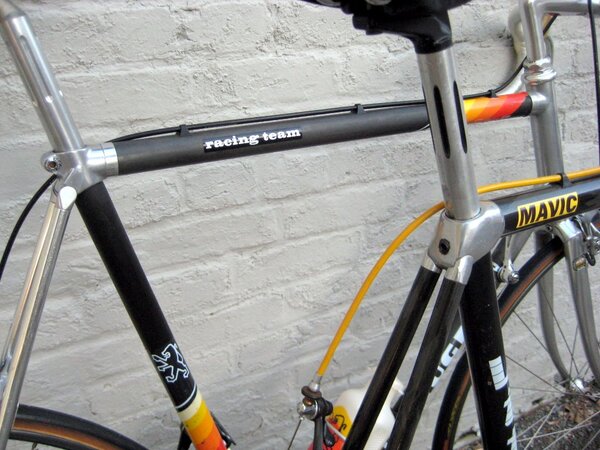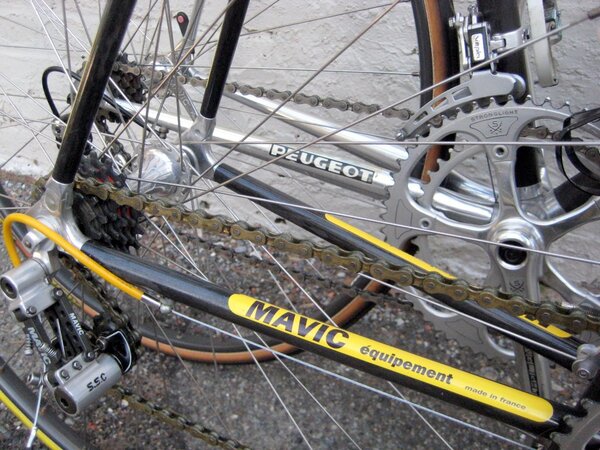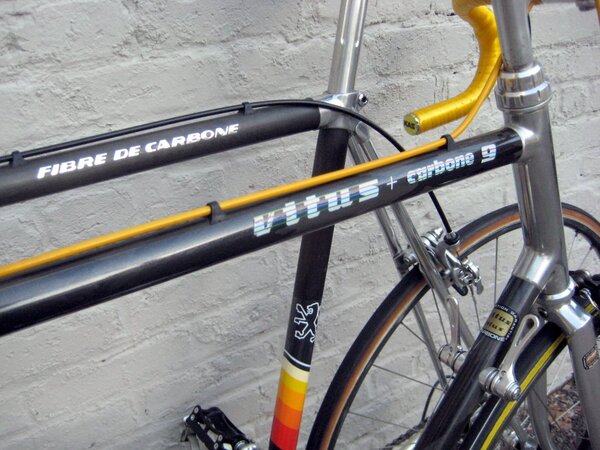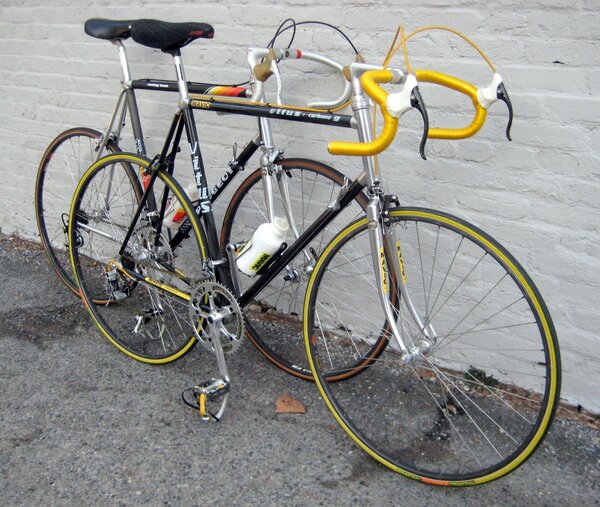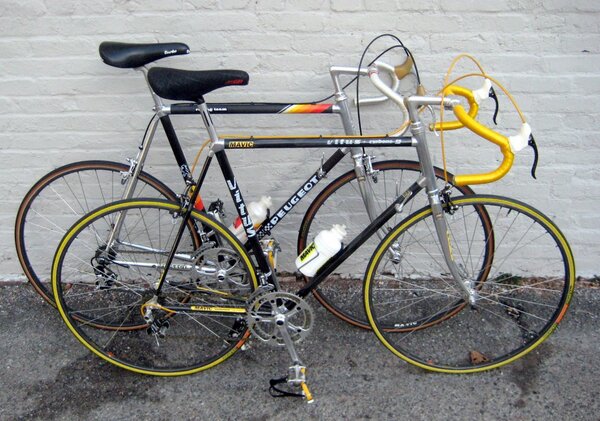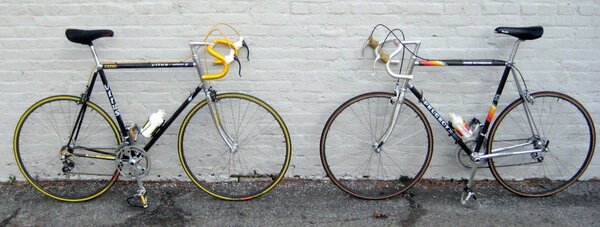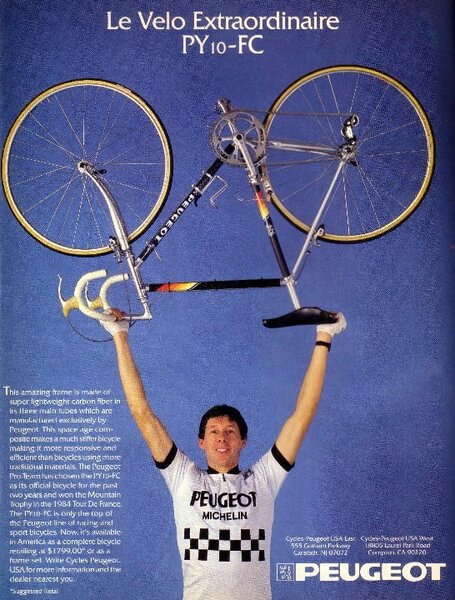kohl57@yahoo.com
Old School Hero
Having just finished my 1987 Vitus Carbone 9, I couldn't resist the opportunity to photograph it with my 1985 Peugeot PY-10FC.
The PY-10FC is essentially the Vitus Carbone 3 but with proprietary Peugeot oversized carbon tubes. This example is a ex-Team machine and fitted with team spec components.
The Vitus Carbone 9 is "Tout Mavic" 1000 series SSC components
Comparative weights: 17.8 lbs Vitus Carbone 9
18.7 lbs Peugeot PY-10FC
Other photos:
http://www.ipernity.com/doc/286349/album/872666
Peter Kohler
Washington, DC USA
The PY-10FC is essentially the Vitus Carbone 3 but with proprietary Peugeot oversized carbon tubes. This example is a ex-Team machine and fitted with team spec components.
The Vitus Carbone 9 is "Tout Mavic" 1000 series SSC components
Comparative weights: 17.8 lbs Vitus Carbone 9
18.7 lbs Peugeot PY-10FC
Other photos:
http://www.ipernity.com/doc/286349/album/872666
Peter Kohler
Washington, DC USA
